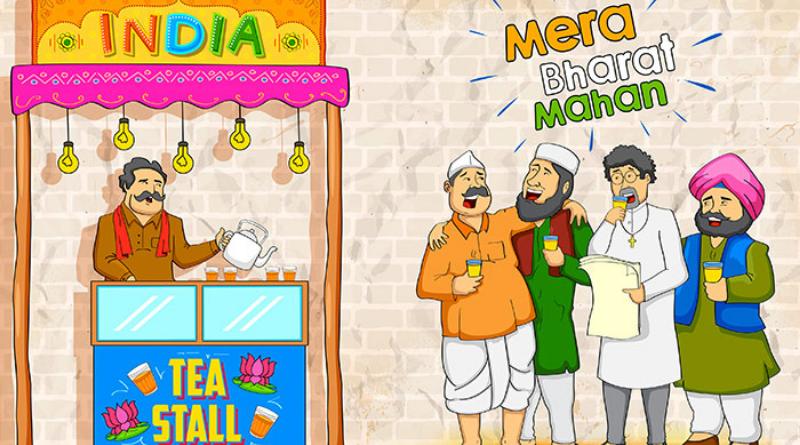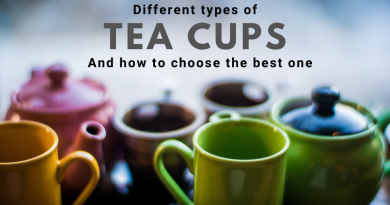The Vibrant Indian Tea Culture: A Fusion of Tradition & Modernization
India is one of the world’s largest tea-producing countries. In India, there are more than one lakh tea estates where millions of people work for tea leaves picking, tea processing, and contribute to the great Indian Tea Culture. Indian territory illustrates its tea-producing localities by the critical differences in climate and locations. Assam, Darjeeling, and Nilgiri are the three central tea-producing regions of India. The people here consumed 70% of their produced tea, and therefore, the tea culture of India is also very vibrant and classy.
What is Indian Tea Culture?
At present, India is the second-highest tea-growing country globally and exports its massive variety of teas around the world. Indian tea culture started from the early historical age. The production of these flavorful leaves began a long time ago. Today, Indian tea is the most preferred drink for all Indians across the world irrespective of their caste, creed, or status.
Indian people consumed more than 800,000 tons of tea per year. It includes lightly flavored breakfast teas to the varieties of chai teas served from corporate to the humble roadside tea stalls.
How Important is Tea to The Indians?
Tea is the most famous and trendy beverage among Indians. Though the Britishers have introduced India’s tea culture, it still became part and parcel of Indian society and culture. Tea is now like a great source of refreshment, an energizer, a part of any discussion, a component of gossip, and an Indian household culture. In a word, tea and Indian tea culture are inseparable parts of Indian society.
In India, almost at every house, guests are offered chai with snacks. It’s a historical tradition that persists at every nook and corner of the country. Offering the traditional Indian tea to anybody who visits the house irrespective of the season is considered a kind, friendly way of welcoming guests. In fact, Indian ladies often organize tea-parties where they serve tea with a different types of snacks and chats. It is a considerable refreshment for the Indian house-wives.
How Tea Impacts Daily Life and Society?
Indians have different kinds of tea habits. People of any age group need tea right after getting up in the morning. It is the usual habit of maximum Indians. Generally, in Indian tea culture, ladies prepare the morning tea for the other family members out of their love.
While having long hectic hours, people often take little tea breaks to refresh their minds. This is an interactional break also. Employees discuss different issues during the tea break. This contemporary Indian tea culture helps to solve difficult problems over a cup of tea. This short tea breaks provide immense energy to the people to carry on their vital office works.
Evening tea is another tea tradition in India. People here prefer this hot beverage in between working and want a hot sip of tea when they get back to their homes after office. Tea is the stress buster for them. They relish a hot cup of tea and forget about the anxieties and tensions of their work. On holidays Indian people prefer to spend their evenings with their family at tea tables.
Old adults and retired individuals are also very affectionate to tea. Local tea-stalls are centers of their regular attraction and its kind of core to Indian tea culture. These local tea-stalls are the ideal place for discussing any social and political issues. People, while drinking tea, argue about every little problem, and they enjoy it very much.
Tea culture in India is so intense that you will not find any single railway station without a tea-stall. Even tea selling vendors are seen in the running train, and by this, they earn their livelihood. Not only railway platforms but on the bus depots, outside of schools, offices tea stalls are present eminently. These stalls are the source of income for many Indians. Therefore, it is a passion and a way to carry on the lives of many Indians.
Chai tea and Other Types of Indian Tea:
The word ‘chai’ means tea. Indians generally prefer tea with creamy milk and sugar. This type of Indian tea with milk is more famous as chai in the stalls. In recent times, many spices are added with the creamy milk tea to include some flavor along with the tea. It is known as masala chai in roadside tea stalls. It is the Indian version of chai tea, but don’t you mistake asking for a chai tea at any Indian tea stalls. It can make you a matter to crack a joke at.
Apart from the masala chai, different kinds of tea are part of Indian tea habits and ever-evolving Indian tea culture. Some Indian cities possess some exclusive brews and famous for some unique names like cutting chai of Mumbai, Irani tea of Hyderabad, Kesari chai, or saffron tea Kashmir. Lemon tea is also a unique tea form with the flavor of lemon and salt. Whatever the name is, the tea remains the same popular to the Indian countrymen.
How is Indian Tea Different from the Rest of the World?
Though India’s tea tradition was very ancient, it was the British tea culture that made tea popular among the Indians. They have begun tea cultivation in India due to the high prices of Chinese tea, which they consumed then. The East India Company offered tea at a minimum cost to make the drink popular and hence laid the foundation of Indian tea culture.
India produces a massive amount of tea every year, and also the people there consume the maximum amount. In another part of the world, coffee culture significantly impacts the tea culture, and tea consumption reduces significantly. But, the tea culture in India remains intact even with the encroachment of western coffee culture. In another part of the world, green tea and herbal tea have become more famous, but no tea is as popular as milk-infused sweet tea in India. Even the foreigners who visit India can be seen enjoying the masala chai at the roadside tea stalls. Indian tea culture influences everyone!
The British have made the tea tradition famous in India, but the Indians have modified it as their signature one.
Final Words
Tea is not only considered as a beverage in India, but it is a passion and emotion of Indian tea culture. Indians need tea at almost every phase of their regular life, and it is the means for many to earn their livelihood in India. The passion of the Indians for the tea make their tea tradition enriched day by day.





Pingback: Chinese Tea Culture Vs. Japanese Tea Culture Wine Tea Coffee
Pingback: Top Indian Tea Versions: Different Styles of Indian Tea Wine Tea Coffee